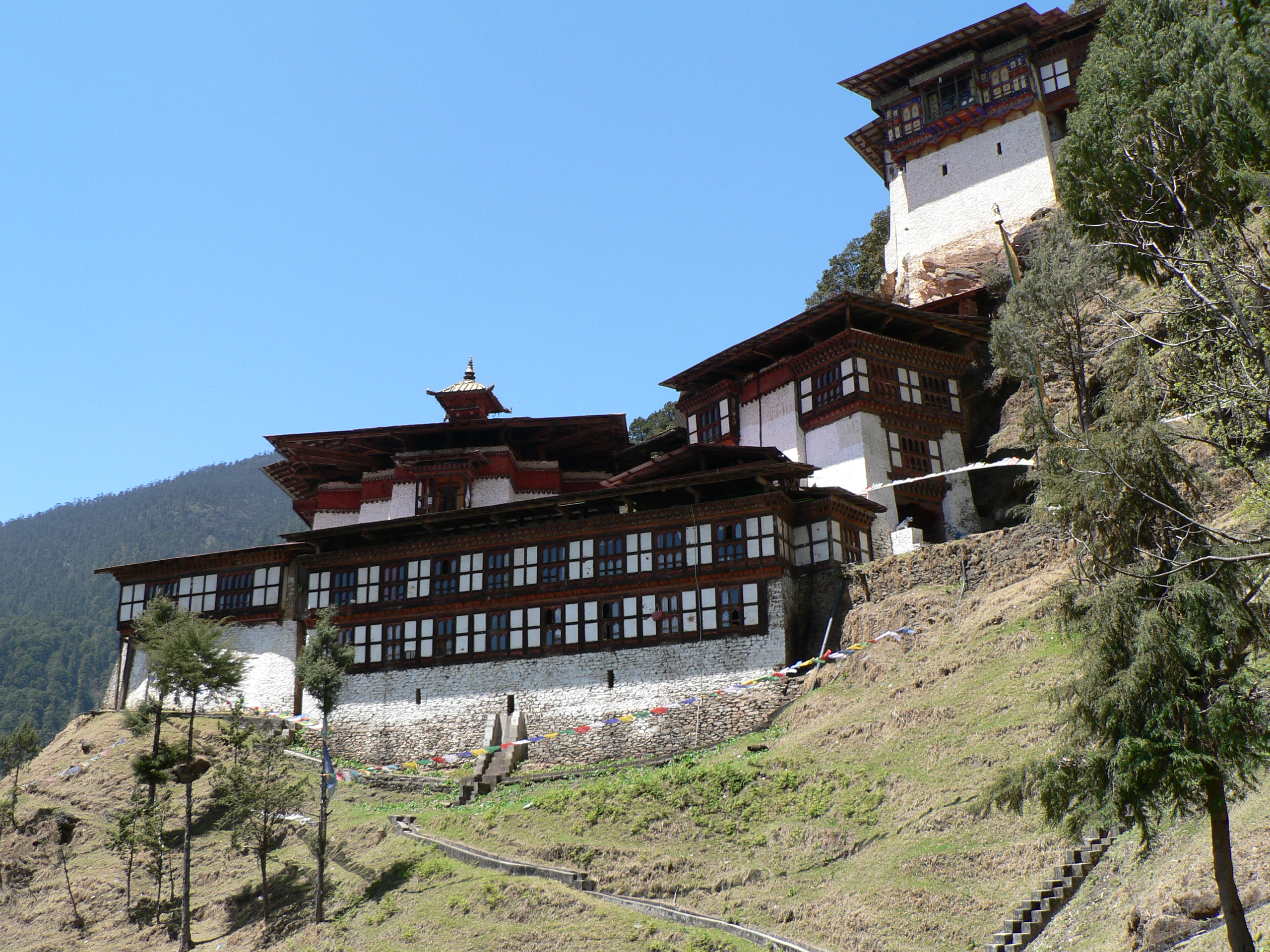Umze Peljor on:
[Wikipedia]
[Google]
[Amazon]
Samten Tenzin, better known as Umze Peljor, (died 1707) was the 7th
 Before his rise to Druk Desi, Peljor served as ''Umze'' or
Before his rise to Druk Desi, Peljor served as ''Umze'' or
Druk Desi
The Druk Desi (Dzongkha: འབྲུག་སྡེ་སྲིད་; Wylie:'' 'brug sde-srid''; also called " Deb Raja")The original title is Dzongkha: སྡེ་སྲིད་ཕྱག་མཛོད་; Wylie: ''sde-srid phyag-mdzod''. wa ...
or head of government of Bhutan from 1703 until his death. Inexperienced as a politician and of mild character, Peljor served as little more than a co-ruler to the more powerful Gyaltsab (head of state) Kuenga Gyaltshen. Feeling overwhelmed by the factional strife at court, Peljor eventually retired to Chagri Monastery in 1705. For the last years of his life, he remained only nominally in office while effectively living as monk.
Biography
 Before his rise to Druk Desi, Peljor served as ''Umze'' or
Before his rise to Druk Desi, Peljor served as ''Umze'' or precentor
A precentor is a person who helps facilitate worship. The details vary depending on the religion, denomination, and era in question. The Latin derivation is ''præcentor'', from cantor, meaning "the one who sings before" (or alternatively, "first ...
at the state monastery, and was thus skilled at religious matters but completely unprepared for a high-ranking governmental office. Appointed ruler after the unexpected death of his predecessor Ngawang Tshering in 1703, Peljor effectively shared his power with the much more influential and powerful Kuenga Gyaltshen, who officially acted as Gyaltsab. As Peljor's reign was also short and obscure, the historian Tenzin Chögyal regarded him as little more than a figurehead, and John Ardussi called him "a virtual nonentity". Pema Tshewang, however, believed Umze Peljor to have been a "easygoing and peaceful character, who ruled righteously", while Karma Phuntsho considered him a "politically naive", but "mild" ruler.
During Umze Peljor's reign the power struggle between the dzongpen
Dzongpen (Dzongkha: རྗོང་དཔོན་; Wylie: ''rjong-dpon''; also spelled "Dzongpon," "Dzongpön," "Jongpen," "Jongpon," "Jongpön") is a Dzongkha term roughly translated as governor or dzong lord. Bhutanese dzongpens, prior to unif ...
s Tenpa Wangchuk of Punakha
Punakha ( dz, སྤུ་ན་ཁ་) is the administrative centre of Punakha dzongkhag, one of the 20 districts of Bhutan. Punakha was the capital of Bhutan and the seat of government until 1955, when the capital was moved to Thimphu. It is abo ...
and Druk Rabgay of Thimphu
Thimphu (; dz, ཐིམ་ཕུག ) is the capital and largest city of Bhutan. It is situated in the western central part of Bhutan, and the surrounding valley is one of Bhutan's ''dzongkhags'', the Thimphu District. The ancient capital city ...
began, resulting in widespread factional strife. Unable to deal with the political imbroglio among the government, Peljor retired to Chagri Monastery in 1705, effectively ceding his remaining power to Kuenga Gyaltshen. Nominally, however, he remained in office until his death in 1707.
After Umze Peljor's death, Druk Rabgay became the first lay Druk Desi, ending the monk rule over the country. Murdering his rivals and Kuenga Gyaltshen, he ushered into a chaotic and violent period of Bhutanese history.
References
Bibliography
* * {{Rulers of Bhutan 1707 deaths Bhutanese monarchs Buddhist monarchs 18th-century monarchs in Asia